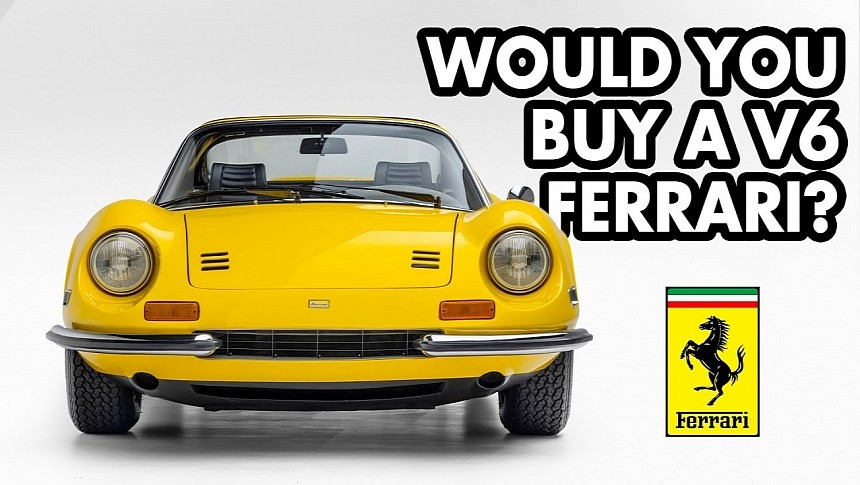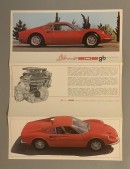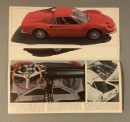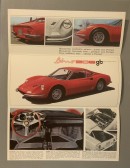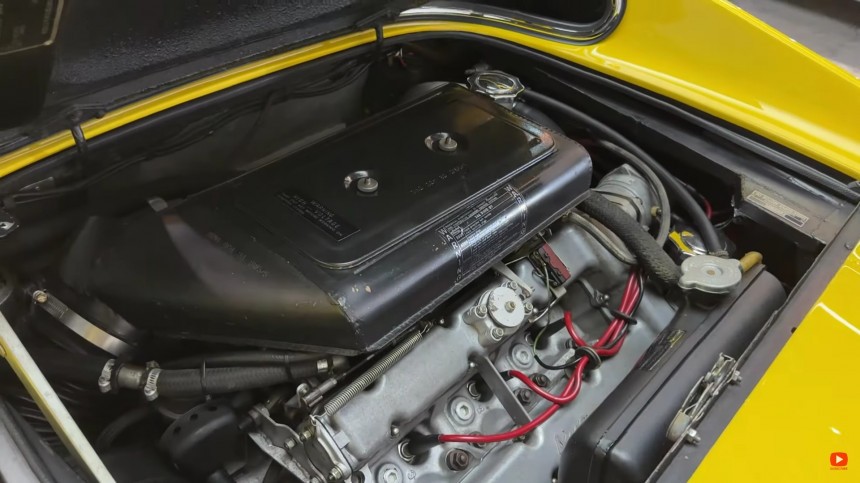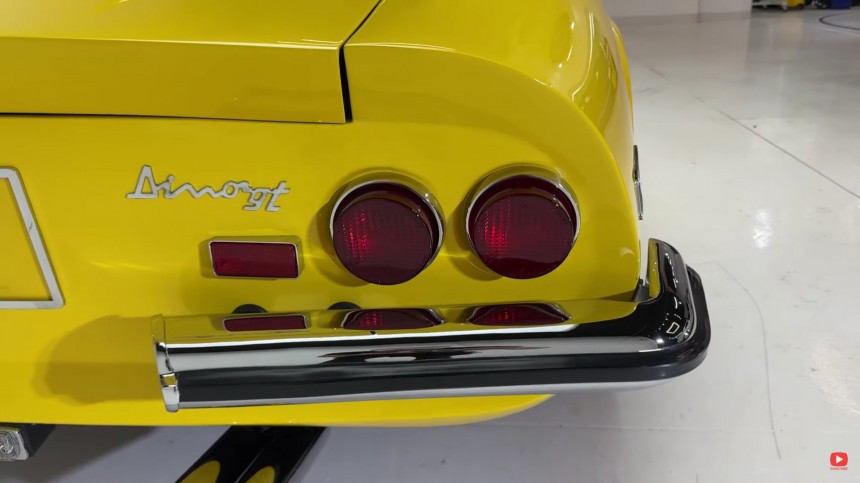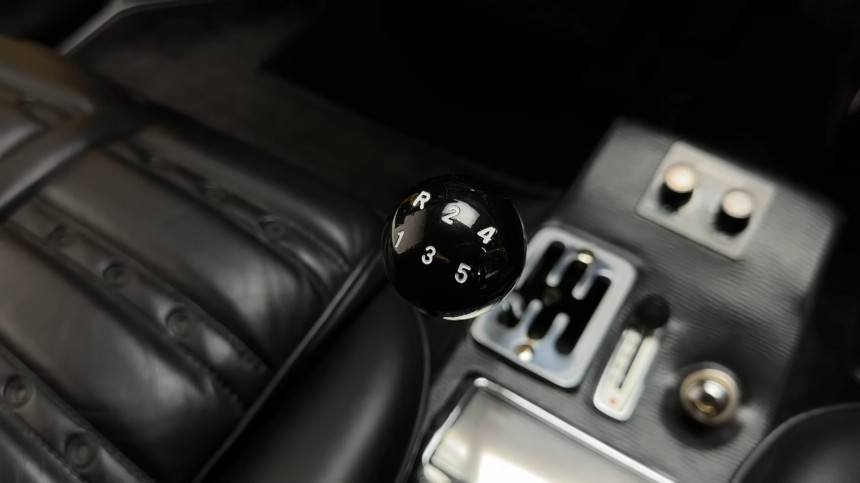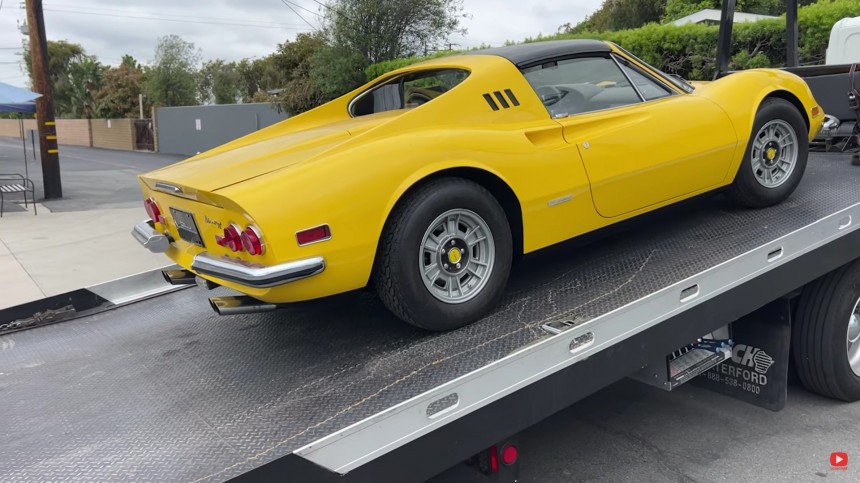The story of the Dino, the Ferrari marque that came to be as the ultimate homage paid by the great Enzo to his untimely-departed son Alfredo, is linked to several breakthroughs achieved by the Italian carmaker.
First, the Dino was a Ferrari at heart – perhaps the Ferrari-most car ever made! - but it didn’t wear the prancing horse emblem for a solid ten years. Between the first 206 GT model of 1967 and the 308 GT4 from 1976, the brand was simply marketed as “Dino.” The sub-brand was established as a supreme heartbroken commemoration of Enzo’s only son, who died of muscular dystrophy in 1956 at 24.
The young Alfredo – affectionately called Alfredino (hence the Dino) – had designed a small V6 engine for a mid-engined automobile. The young Ferrari didn’t live to see the car built, but his father didn’t leave his son’s legacy to go to the grave.
In 1967, the first mid-engined road-going automobile born under the Maranello umbrella was the Dino 206GT. Two years later, a bigger engine saw the rebadging of the sportscar to 246GT; deciphering the nameplate reveals a 2.4-liter V6 engine.
The Dino was Ferrari’s move toward a new carmaking paradigm, broadening its market share through less complex, less costly models for younger buyers. It was even marketed as “almost a Ferrari” (see the brochure in the gallery). Until then, all civilian-sold Prancing Horses were front-engined V12s.
True to its origins, Ferrari wanted the small V6 engine in Formula 2 cars. The rules dictated that the powerplants be production-version based and have a yearly production run of no fewer than 500 units. To pull this manufacturing trick off, Ferrari asked for the help of FIAT, whose assembly plants could quickly assemble the 500 engines needed for racing homologation.
Ironically, Ferrari first approached Ford in 1963 to deliver the high-volume engine production, but the deal went bust (with the notable '66-'69 Le Mans side-effects). Ferrari then struck a deal with FIAT, and the history of the legendary Maranello company changed forever.
FIAT was more than capable of making 500 engines a year, so Ferrari introduced the second-generation Dino in 1969 with a sales-oriented mindset. By the end of 1974, 3,761 Dinos were made, including 152 Dino 206GT and 1,274 Dino 246GTS. The latter was the Spyder version of the GT (hence the S added to the nameplate), and it was produced in the model’s final years, between 1972 and 1974.
Although it never did stand at the blue-blooded Ferrari family reunions at the same level as its V12-endowed brethren, the Dino didn’t fall far from the performance tree. The small Dino was nimbler, lighter, better balanced, and more responsive than the pretentious front-engined Grand Turismos before it.
Although the 2.4-liter 65° V6 wasn’t a powerhouse, producing only 192 hp (195 PS) at 7,600 RPM and 166 lb-ft (226 Nm), the compact and sleek car would splice the air with ease and reach 148 mph (238 kph). The five-speed gated transmission – fully synchronized and mounted like the engine, transversally behind the driver - was apt to propel the 246 GT to 62 mph (100 kph) in five seconds.
The Dino name was given to the engine, not to the car – as you might recall, FIAT also used the powerplant in his own model (the FIAT Dino). The racing pedigree of the small V6 is evident in its design, with two camshafts per bank, triple twin-choke Weber carbs, and electronic ignition.
To keep costs down, the engine block was cast iron, with aluminum-silicon heads, and the body was made of steel panels on a tubular steel frame. Despite the iron-rich materials used, the Dino was a featherweight two-seater with a dry weight of just 1,186 kg (2,615 lbs).
Power brakes with discs on all four corners and independent suspension front and rear gave the Dino a very sporty handling, as noted by magazines of the period. Although virtually identical in terms of the overall design, the first and second generations differ all so subtly. The 246 GT and GTS have a slightly longer wheelbase than the 206 GT (2,340 mm, against 2,280 mm / 92 inches and 90 inches, respectively).
The 246 GT/GTS constitutes the bulk of the model from a production standpoint. Three distinct versions were assembled – factory codes 607L, 607M, and 607E. The E series is the most heavily represented, with 1,431 GT coupés and 1,274 GTS removable tops.
Several slight differences set the US-spec versions from the European models – the most notable is the vertical indicator lights in the front, unlike the flush-mounted ones on non-US cars. As for the GTS, the most prominent feature is the black removable roof and the lack of a rear quarter window (replaced by three air vents).
Better yet, look at the example in the video, one of the few wearing the original Ferrari color. Don’t be taken aback by this statement. Rosso Ferrari is a company’s trademark, and the blood red shade is a staple of the Maranello carmaker. But it isn’t the company’s initial choice for the famous machines.
Take a close look at the prancing horse on every Ferrari's badge: the black stallion's background is a bright yellow – just like the car featured in this video. A beautifully preserved 246GTS, emerging for precautionary detailing work in the I Am Detailing car spa shops in Costa Mesa, California.
The young Alfredo – affectionately called Alfredino (hence the Dino) – had designed a small V6 engine for a mid-engined automobile. The young Ferrari didn’t live to see the car built, but his father didn’t leave his son’s legacy to go to the grave.
In 1967, the first mid-engined road-going automobile born under the Maranello umbrella was the Dino 206GT. Two years later, a bigger engine saw the rebadging of the sportscar to 246GT; deciphering the nameplate reveals a 2.4-liter V6 engine.
True to its origins, Ferrari wanted the small V6 engine in Formula 2 cars. The rules dictated that the powerplants be production-version based and have a yearly production run of no fewer than 500 units. To pull this manufacturing trick off, Ferrari asked for the help of FIAT, whose assembly plants could quickly assemble the 500 engines needed for racing homologation.
Ironically, Ferrari first approached Ford in 1963 to deliver the high-volume engine production, but the deal went bust (with the notable '66-'69 Le Mans side-effects). Ferrari then struck a deal with FIAT, and the history of the legendary Maranello company changed forever.
Although it never did stand at the blue-blooded Ferrari family reunions at the same level as its V12-endowed brethren, the Dino didn’t fall far from the performance tree. The small Dino was nimbler, lighter, better balanced, and more responsive than the pretentious front-engined Grand Turismos before it.
Although the 2.4-liter 65° V6 wasn’t a powerhouse, producing only 192 hp (195 PS) at 7,600 RPM and 166 lb-ft (226 Nm), the compact and sleek car would splice the air with ease and reach 148 mph (238 kph). The five-speed gated transmission – fully synchronized and mounted like the engine, transversally behind the driver - was apt to propel the 246 GT to 62 mph (100 kph) in five seconds.
To keep costs down, the engine block was cast iron, with aluminum-silicon heads, and the body was made of steel panels on a tubular steel frame. Despite the iron-rich materials used, the Dino was a featherweight two-seater with a dry weight of just 1,186 kg (2,615 lbs).
Power brakes with discs on all four corners and independent suspension front and rear gave the Dino a very sporty handling, as noted by magazines of the period. Although virtually identical in terms of the overall design, the first and second generations differ all so subtly. The 246 GT and GTS have a slightly longer wheelbase than the 206 GT (2,340 mm, against 2,280 mm / 92 inches and 90 inches, respectively).
Several slight differences set the US-spec versions from the European models – the most notable is the vertical indicator lights in the front, unlike the flush-mounted ones on non-US cars. As for the GTS, the most prominent feature is the black removable roof and the lack of a rear quarter window (replaced by three air vents).
Better yet, look at the example in the video, one of the few wearing the original Ferrari color. Don’t be taken aback by this statement. Rosso Ferrari is a company’s trademark, and the blood red shade is a staple of the Maranello carmaker. But it isn’t the company’s initial choice for the famous machines.
Take a close look at the prancing horse on every Ferrari's badge: the black stallion's background is a bright yellow – just like the car featured in this video. A beautifully preserved 246GTS, emerging for precautionary detailing work in the I Am Detailing car spa shops in Costa Mesa, California.
